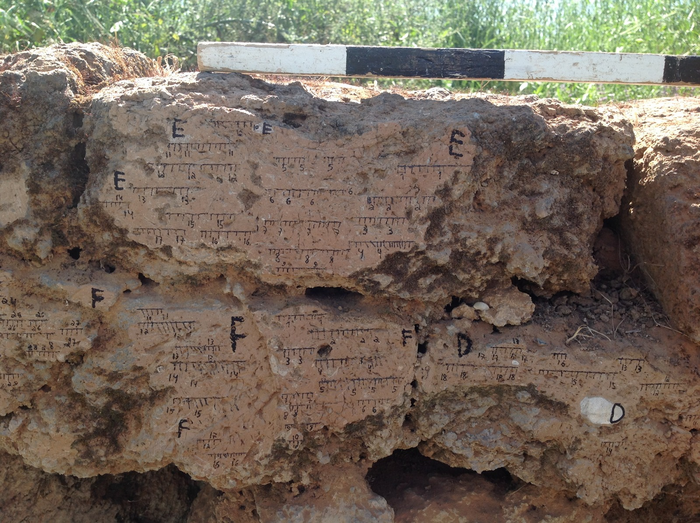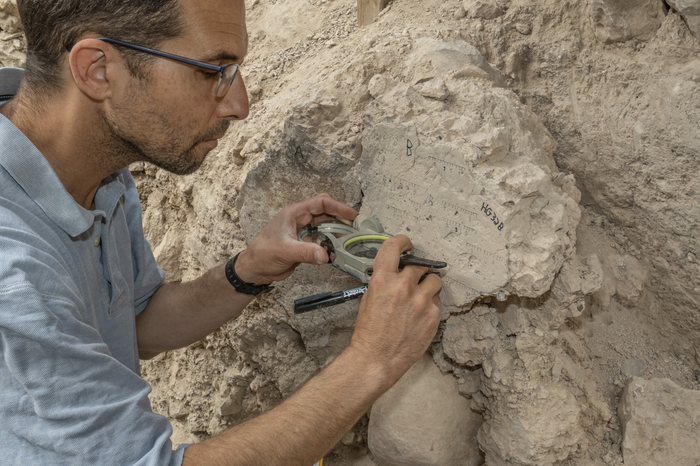Scientists use new dating technique to analyze historical accuracy of Old Testament battles

Scientists say they are using new technology that could allow them to properly date several military conquests depicted in the Bible and potentially validate the scriptures' historical authenticity.
A study published last Tuesday in the Proceedings of the National Academy of Sciences introduces an "approach that applies archaeomagnetic investigation to the remains of ancient towns that were destroyed by fire." The new approach enables researchers to examine "chronological insights" that will allow them to link archaeological contexts with Old Testament accounts of military campaigns against the kingdoms of Israel and Judah.
Conducted by Hebrew University and Tel Aviv University, the study involved 20 researchers from different countries and disciplines led by Yoav Vaknin of Tel Aviv University's Institute of Archaeology.
The study purports that research accurately dated 21 destruction layers at 17 archaeological sites in Israel.
The researchers used readings from ancient geomagnetic fields that had been preserved through time to track changes in a method called archaeomagnetic dating. When subjected to high temperatures, archaeological findings such as pottery, bricks and roof tiles can record the Earth's temperatures.
Once heated, the findings' magnetic minerals are re-magnetized. The scientists connected them with the Earth's geomagnetic field at a time they were subjected to such high temperatures.
The team reported that the destruction layers provide evidence of the battles described in the Bible, waged by the ancient Egyptians, Arameans, Assyrians and Babylonians. In addition to this method, the team also compared their findings to biblical and extrabiblical sources.

The researchers' findings indicate King Hazael of Aram-Damascus' army was responsible for the destruction of the cities of Tel Rehov, Tel Zayit and Horvat Tevet, in addition to Gath, a Philistine state. The latter's destruction is detailed in 2 Kings 12:18. However, the team believes their findings refuted the theory that Hazael conquered Tel Beth-Shean.
"Based on the similarity or difference in intensity and direction of the magnetic field, we can either corroborate or disprove hypotheses claiming that specific sites were burned during the same military campaign," Vaknin said in a statement last week.
"Moreover, we have constructed a variation curve of field intensity over time which can serve as a scientific dating tool, similar to the radiocarbon dating method."
Other geomagnetic findings suggest that the Edomites razed parts of Southern Judah to the ground, appearing to affirm that Edom took advantage of Jerusalem's fall and began settling in the southern parts of Judah.
The team believes that one of the most interesting findings relates to the Kingdom of Judah and its end. As one of the project's supervising professors, Erez Ben Yosef, noted in a statement, the kingdom's last days are a matter of debate.
"Some researchers, relying on archaeological evidence, argue that Judah was not completely destroyed by the Babylonians," Yosef said.
"While Jerusalem and frontier cities in the Judean foothills ceased to exist, other towns in the Negev, the southern Judean Mountains and the southern Judean foothills remained almost unaffected."
The professor stated that the study's magnetic results appear to support the theory that Judah's demise was not solely the fault of the Babylonians.
"Several decades after they had destroyed Jerusalem and the First Temple, sites in the Negev, which had survived the Babylonian campaign, were destroyed — probably by the Edomites who took advantage of the fall of Jerusalem," Yosef said.
"This betrayal and participation in the destruction of the surviving cities may explain why the Hebrew Bible expresses so much hatred for the Edomites — for example, in the prophecy of Obadiah."
In a Tuesday interview with The Times of Israel, Vaknin said that the study is the first to have a "large enough database" to conduct reliable archaeomagnetic dating. He also elaborated further on how the dating tool settled the debate regarding the destruction of Tel Beth Shean.
"The dating was open. There was no clear date, but within the age range, the higher probability, according to the excavator Ami Mazar, who is also a co-author, it's most likely later, at about 830 BCE — also, like Hazael," the scientist said.
Vaknin said that the results suggest the destruction had to have taken place much earlier, meaning that Hazael couldn't possibly have been responsible. He hopes that archaeologists in Israel will continue utilizing this new dating technique.
"The more data we have, the more accurate and reliable this dating method is, and I think we are there already now," he said.
Earlier this year, an Italian scientist and his team claimed that a new X-ray technique, "wide-angle X-ray scattering," shows the Shroud of Turin may have originated during the time of Jesus's death and resurrection. The fabric is believed by many to have served as Christ's burial garment after his crucifixion.
Liberato De Caro of Italy's Institute of Crystallography of the National Research Council and his colleagues determined in peer-reviewed research the shroud could be around 2,000 years old. The researchers' findings were published in the international journal Heritage in April.
"The Shroud of Turin challenges science, and each new piece of research could clarify part of the complex puzzle this relic represents," De Caro told The National Catholic Reporter.
"For example, the Shroud's image has yet to find a definitive explanation from those who have studied it, an explanation shared by the entire scientific community."
"It is as if a photographic plate had been imprinted by radiation," he continued. "By studying the traces left on the plate, one tries to trace the nature of the radiation and its properties. The same could be done for the Shroud's image."
The scientist's new dating technique involves examining the scale of atoms to date samples from linen fabrics. While De Caro admitted the technique is still in its "infancy," he wants to continue using it to study other samples of the the Shroud of Turin.
Samantha Kamman is a reporter for The Christian Post. She can be reached at: samantha.kamman@christianpost.com.





























